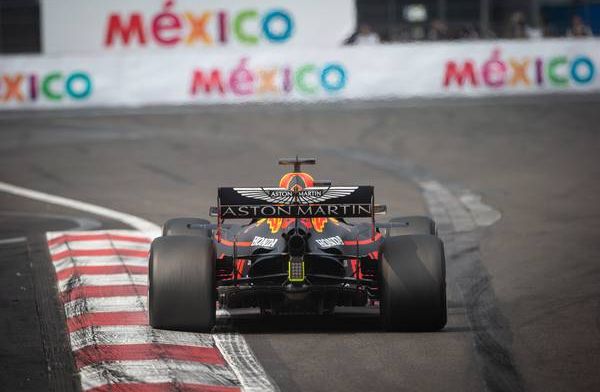Interview

Altitude problems Mercedes and Red Bull Racing Honda have to deal with in Mexico
Max Verstappen and Red Bull Racing are firm favourites to win the 2021 Mexican Grand Prix. This season the Dutchman has a Championship competitive car that works successfully on many different track types. But this weekend the RB16B gets to race around a traditionally strong Red Bull track in the turbo-hybrid era.
Verstappen has racked up two wins in Mexico and could’ve arguably had more in years gone by. That was without a car capable of constantly beating Mercedes like he has done in 2021. Red Bull’s main advantage in Mexico comes down to the fact that the track is located at 2,285 metres above sea level. The Honda engine seems to work well at altitude, whereas Mercedes’ engine seemingly struggles to get its maximum performance.
In an exclusive conversation with GPBlog, Head Race Mechanic for Scorpio Motorsport Louis Kershaw explains the differences at high altitude which will have a factor on engines this weekend in Mexico.
“It all comes down to oxygen content of the air coming into the engine. When the oxygen molecules are packed tighter you get more of them in the same volume of air. Oxygen is what is needed to mix with the atomised fuel for combustion,” Kershaw explained.
“At a higher altitude the air is thinner so you get lower oxygen content in the air, and closer to sea level the air is rammed full of oxygen so therefore more power. Just imagine going for a run at height altitude, you start breathing heavily very quickly and you get dizzy, all because you can’t get enough oxygen in. Exactly why people climbing Mount Everest have to have oxygen on the summit.
“I race 80’s 2 stroke motorbikes, and these are very sensitive to changes in temperature or altitude in regards to carburation. So at circuits at higher altitude or higher temperatures, I have to go down a main jet size at least to compensate for lack of oxygen, otherwise, the bike would run too rich, and at race tracks at lower altitude or lower temperatures, where the air is “thicker”, I have to go a jet bigger otherwise the air-fuel ratio would be too lean.”
Mercedes trick
In the Turkish Grand Prix, Mercedes impressed with stronger straight-line speed. A lot of this came through the rear-suspension trick and aerodynamics. But the engine also got a mention throughout September with a trick regarding cool air. Kershaw, who has previously worked in the Renault Clio Cup, explains Mercedes’ rapidly cooling the air has a similar explanation to the high altitude experience.
“Cooler air has a higher oxygen content than hot air. This is why the air compressed by the turbo goes through an intercooler before being forced into the engine. When you compress air heat is generated, and air in the turbo gets super hot, not only from the exhaust gas temperature spinning the turbo and from the actually compressing of the air itself. This theory is why race cars usually have something called a cold air intake, which is a bit of ducting pipe located away from the hot engine bay to try and draw in cooler air not being heated by the residual heat soak from the engine bay," Kershaw added.
Kershaw is head race mechanic for a championship-winning Formula Renault team called Scorpio Motorsport who now run sportscars, mainly Radicals. He has worked for various other teams in competitions such as the Renault Clio Cup, British Formula 4, Junior Saloon Car Championship and Mini challenge. Kershaw is a qualified car mechanic and being self-employed, he also works on road cars for customers based locally in Leicestershire, England. Kershaw can be contacted at louiskershaw56@gmail.com or via his Facebook page, “Blackrun Motor Services” for any business, work or racing related queries.



















































